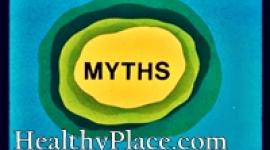E Numbers - Eliminating Additives from Your ADHD Child's Diet
It's called an elimination diet and some people believe that eliminating additives from your ADHD child's diet may improve ADHD symptoms.
 People often ask us about information for E Numbers. Below is an extract from a very good source detailing which additives correspond to each of the E numbers.
People often ask us about information for E Numbers. Below is an extract from a very good source detailing which additives correspond to each of the E numbers.
This may help you decide if there is something you feel that you would like to try to eliminate from your ADHD child's diet. One thing, however, we need to make very clear is that to remove anything from a child's diet can be dangerous or have adverse effects. So we would always encourage that you seek expert advice from a professional before embarking on any form of elimination diet.
This is extracted from the book "E For Additives" about elimination diets
"First, this means cutting out all food and drink containing synthetic colours or flavours, avoiding glutamates, nitrites, nitrates, BHA, BHT and benzoic acid. Second, for the first four to six weeks, foods containing natural salicylates (like aspirin chemically) should be avoided and then re-introduced one at a time to see if they cause problems. Such foods include almonds, apples, apricots, peaches, plums, prunes, oranges, tomatoes, tangerines, cucumbers, most soft fruits, cherries, grapes and raisins.
The additives that are recommended should be avoided are:
- E102 Tartrazine
- E104 Quinoline Yellow
- E107 Yellow 2G
- E110 Sunset Yellow FCF
- E120 Cochineal
- E122 Carmoisine
- E125 Amaranth
- E124 Ponceau 4R
- E127 Erythrosine
- E128 Red 2G
- E132 Indigo Carmine
- E135 Brilliant blue FCF
- E150 Caramel
- E151 Black PN
- E154 Brown FK
- E155 Brown HT
- El60(b) Annatto
- E210 Benzoic Acid
- E211 Sodium benzoate
- E220 Sulphur dioxide
- E250 Sodium nitrate
- E251 Sodium nitrate
- E320 Butylated hydroxyanisole
- E321 Butylated hydroxytoluene
Plus another antioxidant preservative not used in the UK TBHQ (Monotertiary butylhydroxylquinone)
Additives which are either dangerous to asthmatics or aspirin-sensitive people, and could reasonably be added to the listing, or should not be used in food intended for babies or young children are:
- E212 Potassium benzoate
- E213 Calcium benzoate
- E214 Ethyl 4-hydroxybenzoate
- E215 Ethyl 4-hydroxybenzoate, sodium salt
- E216 Propyi 4-hydroxybenzoate
- E217 Propyi 4-hydroxybenzoate, sodium salt
- E218 Methyl 4-hydroxybenzoate
- E219 Methyl 4-hydroxybenzoate, sodium salt
- E310 Propyl gallate
- E311 Octyl gallate
- E312 Dodecyl gallate
- E621 Sodium hydron L-glutamate (monoSodium glutamate)
- E622 Potassium hydrogen L-glutamate (monoPotassium glutamate)
- E623 Calcium dihydrogen di-L-glutamate (calcium glutamate)
- E627 Guanosine 5'-(diSodium phosphate)
- E631 Inosine 5'-(diSodium phosphate)
- E635 Sodium 5'-ribonucleotide
Source: "E for Additives" by Maurice Hanssen with Jill Marsden"
next: Employment Accommodations for Adults with ADHD
~ back to adders.org homepage
~ adhd library articles
~ all add/adhd articles
APA Reference
Staff, H.
(2008, December 3). E Numbers - Eliminating Additives from Your ADHD Child's Diet, HealthyPlace. Retrieved
on 2026, January 10 from https://www.healthyplace.com/adhd/articles/eliminating-additives-from-your-adhd-childs-diet
